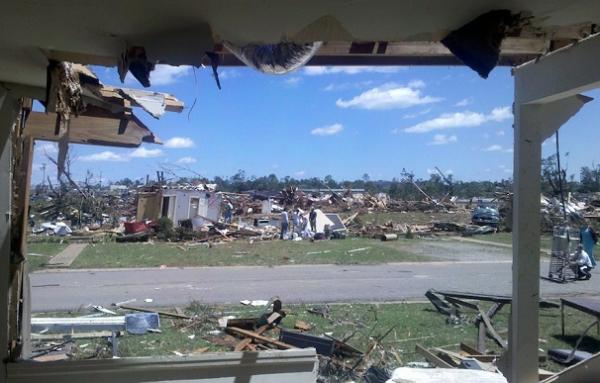Redesigned Roofs Withstand Tornadoes and Hurricanes

The tornado that stormed through Joplin, Mo., on May 22 shredded an estimated 8,000 buildings and stranded desperate families that now must decide whether to rebuild or find a new home. For those choosing to rebuild, Rima Taher, an expert on wind-resistant structures, has a bit of advice: don't do it the old way.
"You wonder why we keep doing the same things, making the same buildings," Taher told InnovationNewsDaily.
By analyzing debris from hurricanes, Taher has come up with a set of guidelines for building new homes in areas prone to extreme weather. [Read More: Why Aren't There Tornado Safety Building Codes?]
"There are similar problems. So, what usually works for tornadoes would work for hurricanes," Taher said.
When wind hits, the roof provides the most critical defense. But during a hurricane or a tornado, the roof is often the first to go. Taher found that increasing the number of slopes on a roof improves the aerodynamics of the structure and greatly reduces the amount of pressure exerted on it. She recommended building a roof with at least four slopes, rather than a traditional gable roof that has only two.
As wind swirls around a house, it can push on the roof from both the inside and outside. Taher suggested installing a moveable flap close to the seam of the roof. During hurricanes and tornadoes, the flap would open, stabilizing the air pressure. In hot weather, the flap would provide ventilation.
Taher also recommended spending a bit of extra money on hurricane clips that attach the roof more firmly to the walls than nails or staples alone.
Sign up for the Live Science daily newsletter now
Get the world’s most fascinating discoveries delivered straight to your inbox.
Researchers at the Center for Building Science and Technology in France tested the recommendations by placing wooden models in a wind tunnel and used the results to design a "cyclonic home" that has twice the wind resistance a traditional home.
Moreover, most of the suggestions are simple to execute and well worth the investment.
"A lot of the things we suggest don't really cost a lot of money. The expense is really minimal compared to the benefits," Taher said.
This story was provided by InnovationNewsDaily, a sister site to LiveScience. Follow InnovationNewsDaily on Twitter @News_Innovation, or on Facebook.









